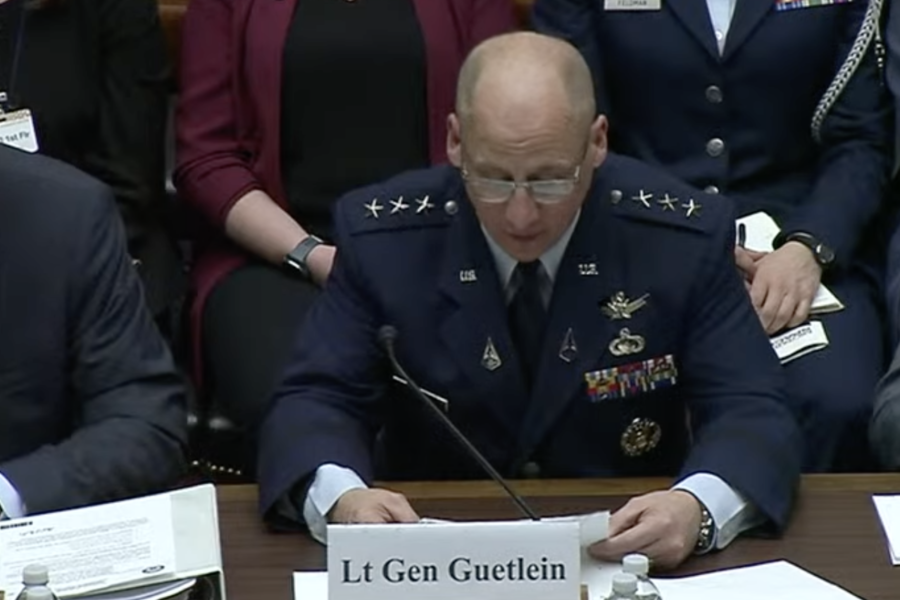As commercial satellites feed images from Ukraine to U.S. space and intelligence agencies in a historically collaborative effort, Space Force leaders are eager to learn how else they can put the commercial sector to work for the service.
In an April 6 hearing before the House Armed Services Committee’s subcommittee on strategic forces, National Geospatial Intelligence Agency Deputy Director Tonya P. Wilkerson alluded to the role the private sector is playing in monitoring Russia’s war on Ukraine.
“[Geospatial Intelligence] has been a central element of our nation’s understanding of the Russia-Ukraine crisis,” she said. “NGA is closely monitoring events in Ukraine while we provide partners across the globe access to numerous sources of intelligence, including commercial space-based imagery.”
While the hearing was taking place, officials at the Space Symposium in Colorado Springs offered more details: some 200 commercial satellites fed imagery into NGA’s pipeline, allowing the agency to anticipate Russia’s moves, David Gauthier, the agency’s deputy director of commercial and business operations, reportedly told an audience there.
This government dependence on commercial space infrastructure illustrates the complexity of the domain. And it’s informing how military leaders are thinking about building up space capabilities.
Lt. Gen. Michael A. Guetlein, commander of U.S. Space Systems Command, said Space Force was planning a “reverse industry day,” an opportunity for space-focused companies to share what they could offer the service in the realm of intelligence, surveillance, and reconnaissance (ISR). A traditional industry day, by comparison, features a specific solicitation or needs statement and invites businesses to show how they could meet the predetermined requirements.
The current conflict highlights unfamiliar territory for the Defense Department: operating in a domain where commercial and civil enterprises have more resources, more infrastructure, and sometimes more experience.
In opening remarks, Guetlein described Space Force’s acquisitions strategy: “Buy what we can, build only what we must.” This partnership-heavy approach will make the space enterprise more resilient, he said, and result in a deterrent network “that transcends national borders and bolsters American security and prosperity.”
On the heels of investing $135 million in space domain awareness, $2.3 billion on satellite communications, and $22 million on commercial SATCOM command and control, Guetlein said the next major investment area for Space Force would be ISR.
“We’re just starting to do studies to determine how much ISR we can buy from space,” he said.
Space Systems Command also recently rolled out a new initiative to grease the skids for collaboration between Space Force and the commercial sector: SSC Front Door. Guetlein described the effort as a “one-stop shop” for would-be commercial partners of all sizes, offering them a single site to access and a single email address through which to communicate with the service.
“We will paint the path to opportunities depending on what they’re offering to bring to the table,” Guetlein said.
Jon Ludwigson, director for contracting and national security acquisitions at the Government Accountability Office, did sound a note of caution. He said the increased number of satellites on orbit as the commercial space industry expands requires greater levels of tracking and risk mitigation, particularly in low-earth orbit, where the Defense Department also hopes to expand operations.
“However, the burgeoning commercial industry provides more options for DOD to procure commercial data and services to complement DOD’s, or in place of DOD developing its own systems,” he said. “We’re examining the opportunities and challenges DOD faces on this front.”


